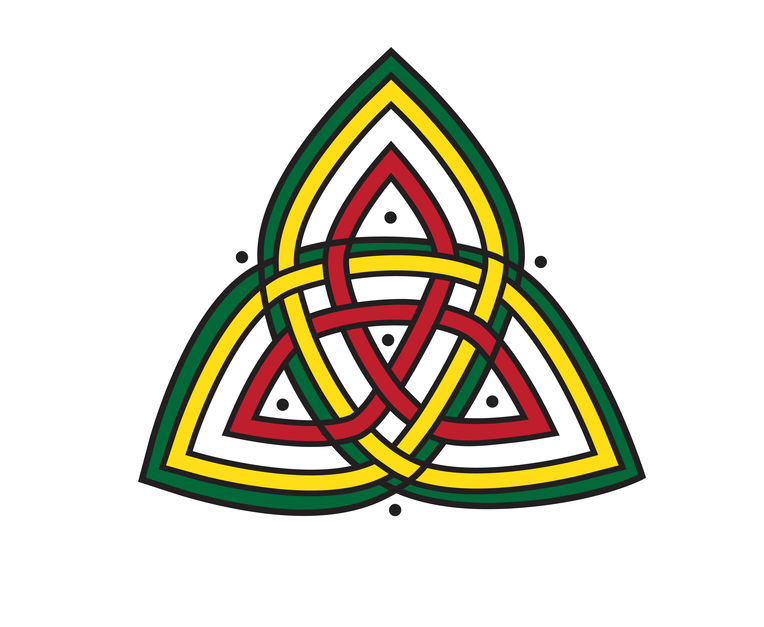
Year C, Trinity, 2019 – Unitas
Podcast: Play in new window | Download
Subscribe: Apple Podcasts | Google Podcasts | RSS
Hey everyone! Welcome here and welcome back! Did anyone think of football when you saw the title above? I did, I will admit. However, Johnny U’s name is pronounced with the emphasis on the second syllable while the title is pronounced with the emphasis on the first syllable. It is a Latin word that means “oneness” or a state of being one or undivided. We often think of God this way until we come upon the Sunday after Pentecost when we turn the corner and begin talking about God’s “oneness” being made up of three co-equal, co-eternal, co-present persons. Karoline Lewis writes that this doctrine is “our best efforts to give words to our experiences of God in our lives and in the lives of others.” No one metaphor or image will ever completely capture God, but we can explore our experiences in multiple ways.
To that end, we are once again veering from the usual path of our podcast. This week, we thought it would be interesting to take this theological concept of the Trinity and run it through all eight intelligences. Because of this, we are not using the scripture passages assigned for this week. If you are interested to see what we offered for them in the past, click the link below for the 2016 Year C show. Otherwise, the worksheet for this year is just below and is, as always, free to download!
WORD smart – [03:55]
Using WORD smart answers the question, “How do we speak about the Trinity?” As an illustration, David thought about the way “holy,” “holey,” and “wholly” are homonyms and define entirely different concepts. However, applying them to our experience of God’s three persons, we might have the opportunity to open up some deep reflections of God’s holiness, our imperfection, and the way the Spirit works to mix all of that together.
EYE smart – [08:15]
Using EYE smart answers the question, “How do we visualize the Trinity?” The first thing that occurred to both of us was Celtic knots. Since I wrote that down first, David went looking for something else and found the Penrose Triangle (see links below). Both visuals represent a continual pathway that leads one into deeper contemplation of God’s eternal nature as the eye traces the lines. For a special effect, make these images available as either a projection or a hand out.
MATH smart – [09:43]
Using MATH smart answers the question, “How to make sense of the Trinity?” Geometric shapes (which also appeal to EYE smart people) can show the interlocking and supporting concept of three persons connected to one another. David also wrote a simple computer program that results in an infinite loop!
BODY smart – [14:29]
Using BODY smart answers the question, “How do we make the Trinity a physical reality?” I thought we could borrow from the Celtic knot and make our own knots using crochet hooks or knitting needles. You could also teach people to weave a Turk’s head bracelet using cord. The idea is to physically engage people in an activity that blends single elements into a whole. Maybe even learn a series of dance steps or a yoga sequence!
- Weave a Turks head bracelet
- click here for video instruction!
- try a Triangle Dance
MUSIC smart – [18:13]
Using MUSIC smart answers the question, “How might we sing about the Trinity?” We suggest the hymn for the day plus have a couple other suggestions that you can download from Hope Publishing. See the links below. Tuning forks resonating in unison would be a great illustration, as well as tuning instruments to themselves and one another. For a special effect, get your congregation to sing a chord and harmonize!
- Holy, Holy, Holy
- God the Spirit, Guide and Guardian
- How Wonderful the Three in One
- Tuning forks in resonance
NATURE smart – [23:29]
Using NATURE smart answers the question, “How would we find the Trinity in the natural world?” Consider the life cycle of a plant: a seed, plant, and fruit are all contained in the same organism. Wind, water, and heat are all parts of a hurricane, and water, bed, and motion are all parts of a river. What other natural cycles would demonstrate the Trinity?
- Maker of Mystery – a song with lyrics from nature
PEOPLE smart – [24:56]
Using PEOPLE smart answers the question, “How can we explore the relational nature of the Trinity?” In her essay linked below, Debi Thomas lists some characteristics of God’s relational nature. Ask your congregation if they would add any others. How have they experienced these in their own lives? Where were they and who were they with? David Lose writes that the deep love of God’s nature cannot be contained in any one person but instead spills out into the world.
- essay by Debi Thomas
- commentary by David Lose
SELF smart – [30:02]
Using SELF smart answers the question, “How would we contemplate the reality of the Trinity in our personal discipleship?” At Lectionary Lab, Delmer Chilton mentions a Barna Research study that identifies the three most important statements we want to hear from another person: “I love you,” “I forgive you,” and “Dinner is ready, let’s eat.” I think these statements are all through Scripture and are reflected in the Trinity.
- sermon by Delmer Chilton
- Mere Christianity
- Salt+ Lectionary essay Threefold Life that references C.S. Lewis
Image credit: Celtic knot pattern design. Vector illustration. Copyright: Sergey Gerasimov via 123RF. Used by permission.

Comments are currently closed.